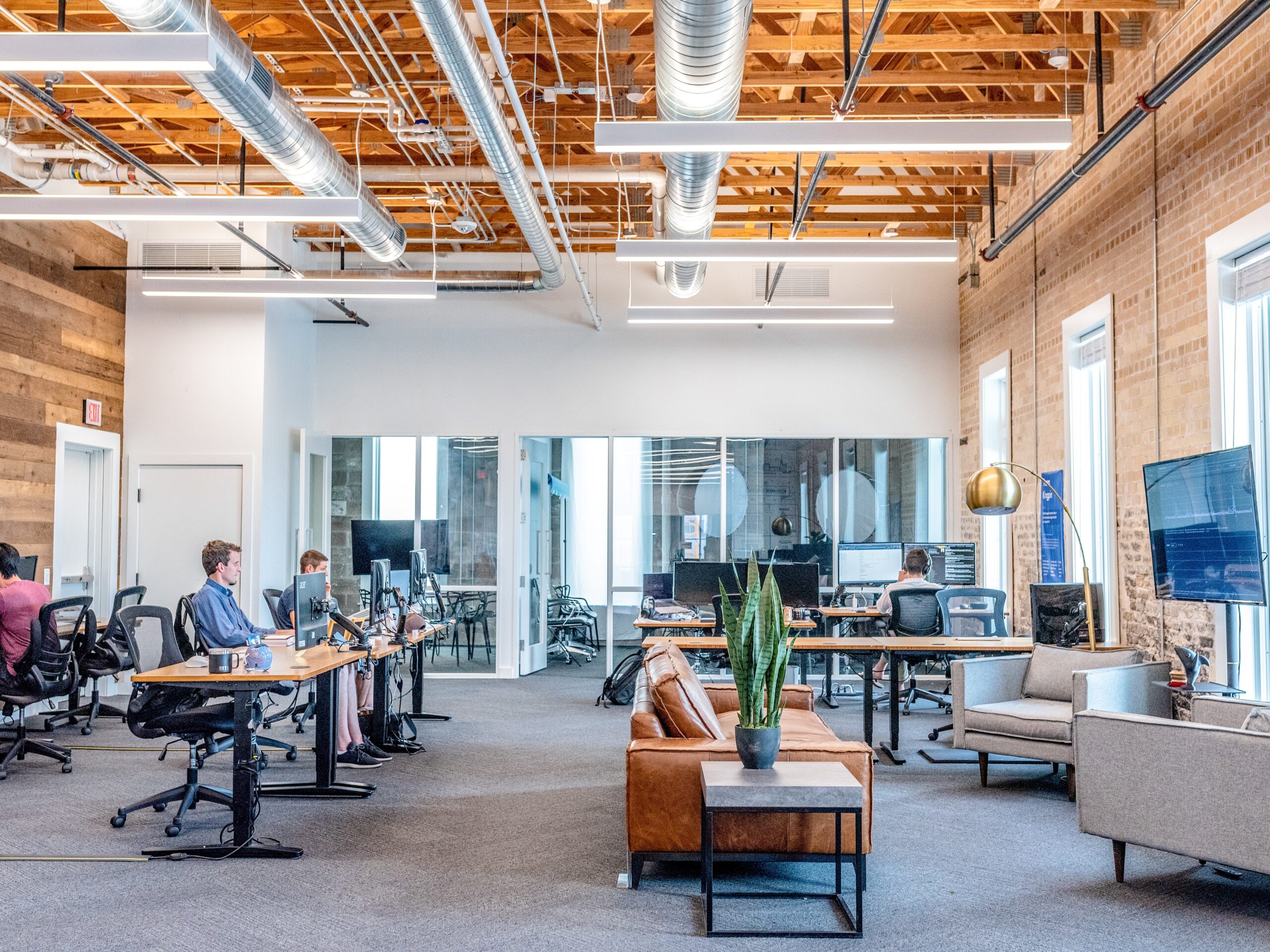A high quality and well thought out office space can help organisations to create a less stressful, happier and more productive atmosphere.
According to research conducted by the University of Warwick, happy employees have been shown to be around 12% more productive – an office space has tremendous potential to feed into this happiness by making colleagues feel comfortable, calm and able to fulfil their objectives.
Trends around office designs have evolved markedly throughout this century. Cubicle factories were replaced by open floorplans in the early years of the 2000s, while more recent times have given rise to recreational additions such as table football, breakout areas and co-working spaces.
Reimagined offices for the hybrid working world
The pandemic in particular has given rise to the latter. With hybrid models embraced as the norm by many firms, a greater proportion of time spent in offices involves collaborative tasks that are not necessarily suited to gathering round an individual’s desk.
Office-based productivity, therefore, is perhaps defined and impacted differently than it was a few years ago.
However, some employees actively prefer to conduct all aspects of their work in an office environment and will need spaces that allow them to do so effectively, meaning any design should also factor in ways to maximise productivity.
How can components of the office impact productivity?
Depending on how individuals respond to different elements of their working environment, there are a huge array of office design elements that feed into employee productivity.
Paying homage to a particular location, for example, could impact how an office is received and used by those who work in it. Meanwhile, different companies will have their own set of organisational values and cultures that they may want to reflect in the design of their workplace.
That said, regardless of location or the type of organisation, there are some widely applicable elements (broad and niche) that can focussed on. These include:
Lighting
One of the simplest but most fundamental components of a workplace is light. We know that natural light has a positive impact on wellbeing, and constant exposure to harsh artificial alternatives can take its toll on employees’ moods and energy levels. On the flipside, overly dim lighting can lead to increased drowsiness and a lack of focus.
Acoustics
Noise is also important. Consider the impact that being able to hear phone conversations and keyboard strokes across the floor can have on concentration. Equally, if your employees need to make phone calls, can they do so in a quiet space that gives them the confidence to speak freely and unimpacted by those working around them?
Colours and walls
Decorative elements such as feature walls and dashes of colour add something extra to an office, with even the most minor details able to spark a moment of inspiration. Different colours can enhance different feelings, with red linked to inspiring passion and blue known for its calming effect.
Ceiling height
Generally, people prefer high ceilings to low ceilings, and from a productivity perspective they promote abstract thinking and creativity. Low ceilings should not necessarily be cause for concern, however, as they can promote concrete and detail-oriented approaches to problem solving.
Allocation of space
This is a critical consideration. Sectioned, private spaces will suit employees with individual workloads who like to get their heads down. Meanwhile, open plan spaces with relaxed furniture and surroundings are more likely to promote more productive collaborative work among colleagues.
Boosting engagement with savvy office design
Offering your employees a well-designed office that feels organised, deliberate, modern and bright will demonstrate to them that you care about their work and wellbeing – in turn, this will help promote happiness and drive productivity among office-using colleagues.
More needs to be done. According to Gallup’s State of the Global Workplace: 2022 Report, just 21% of employees are engaged at work, with only a third (33%) of employees thriving in their overall wellbeing. Stress levels are also high, with the Covid-19 pandemic and waves of lockdown having taken their toll.
Focusing on office design is one way to promote greater wellbeing and engagement among staff. Get this right, and productivity metrics will soon start to trend upwards as well.
Check out our recent building resilience in the built environment series from William Poole-Wilson, workplace design and strategy expert, to read more about the impact of office design for productivity.








